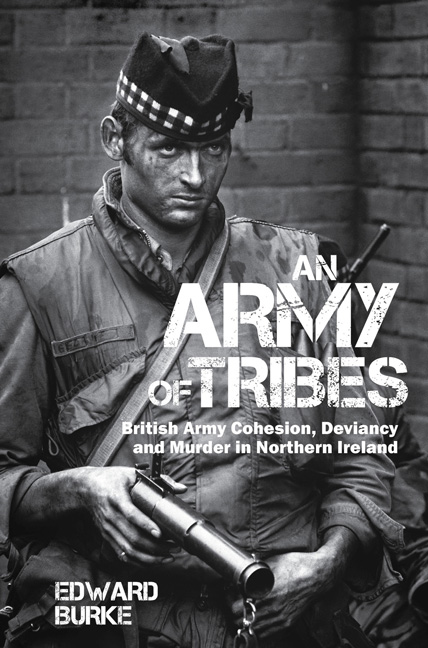Book contents
- Frontmatter
- Contents
- Preface
- Acknowledgements
- List of Abbreviations
- Maps
- Introduction
- 1 The British Army Before 1971
- 2 The Political and Operational Environment in Northern Ireland, 1969–1972
- 3 The Scots Guards and Argyll and Sutherland Highlanders Regiments in Northern Ireland, 1971–1972
- 4 Murder: The Killing of Michael Naan and Andrew Murray
- Conclusion
- Bibliography
- Index
3 - The Scots Guards and Argyll and Sutherland Highlanders Regiments in Northern Ireland, 1971–1972
- Frontmatter
- Contents
- Preface
- Acknowledgements
- List of Abbreviations
- Maps
- Introduction
- 1 The British Army Before 1971
- 2 The Political and Operational Environment in Northern Ireland, 1969–1972
- 3 The Scots Guards and Argyll and Sutherland Highlanders Regiments in Northern Ireland, 1971–1972
- 4 Murder: The Killing of Michael Naan and Andrew Murray
- Conclusion
- Bibliography
- Index
Summary
To understand the conditions under which we made decisions you have to put yourself in the position of a young officer wearing a gas mask, which in those days greatly restricted your line of vision, trying to see shapes moving through a blackened, burning city filled with gas and smoke. Those were the conditions.
Who's in Charge?
Levels of Authority and Charisma in the Battalion
Chain of Command: The Relationship between Brigade and Battalion
Battalion commanding officers in Northern Ireland were mostly left to get on with their core task, dominating their area of operations and trying to win the support of the local population. The role of brigade commanders often seemed distant, while the GOC and his deputy, Commander Land Forces Northern Ireland (CLF), were rarely seen. One Argyll company commander recalled that:
Battalions by and large did what they wanted to do. You were very seldom told what to do by Brigade Headquarters. Brigade Headquarters liaised quite closely with the police, passed information down, took information back up and looked over it with the police. Most of them were there for two years. They were a different outfit; they had a nine to five culture. Not far away you had a 24-hour a day Battalion operating according to its own way of doing things. And each Battalion liked coming in and doing their own thing. This is what happened to the Argylls. They came in – didn't like what they saw. And got stuck in.
The battalion commanding officer and his headquarters staff dealt with demands from Brigade. Most Brigade Commanders, particularly Brigadier David Mostyn (Commander, 8 Brigade – 2 Scots Guards) and Brigadier Peter Bush (Commander, 3 Brigade – 1 Argylls) left their units to manage the details of their daily operations, albeit while providing some intelligence and occasionally coordinating a larger multi-battalion operation. In West Belfast in late 1971, 1 Scots Guards saw a lot more of 39 Brigade Commander, Brigadier Frank Kitson than was the norm (a company commander, Major Michael Nurton of Left Flank, recalled once waking up to find Kitson sitting at the end of his bed waiting for a debrief after a night operation).
- Type
- Chapter
- Information
- An Army of TribesBritish Army Cohesion, Deviancy and Murder in Northern Ireland, pp. 123 - 226Publisher: Liverpool University PressPrint publication year: 2018



